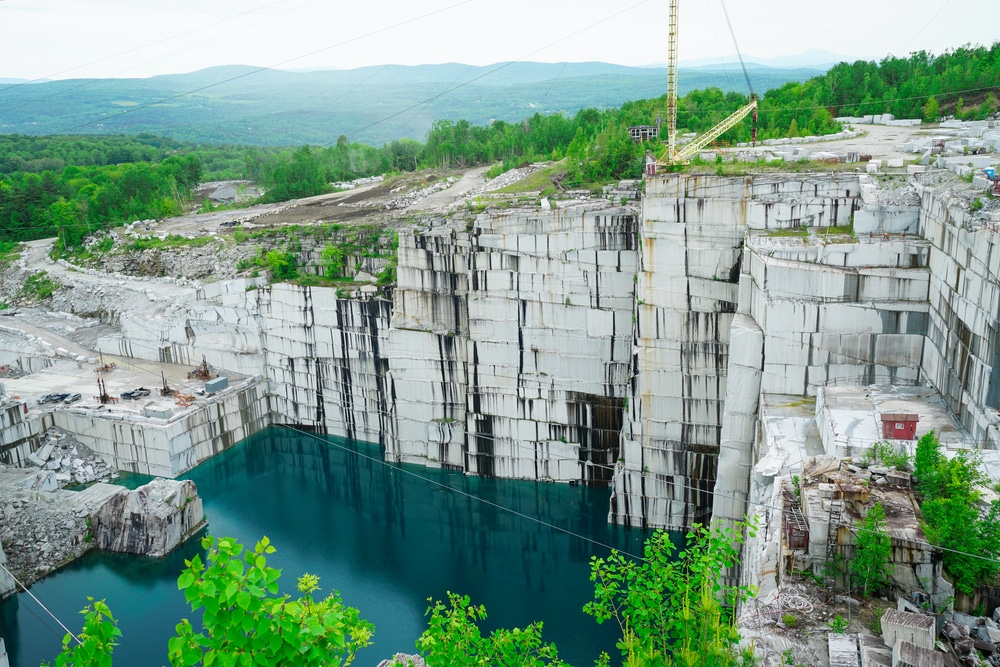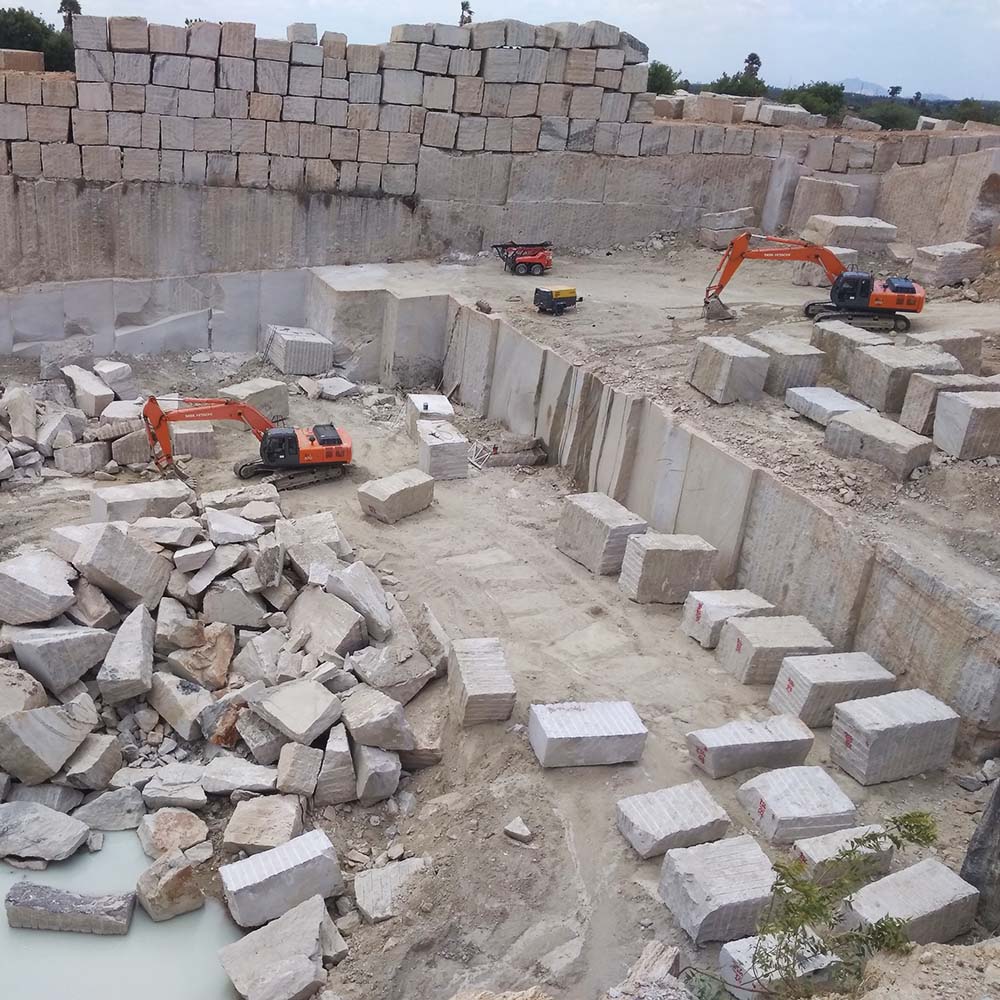Granite Quarries in South Africa Marvels: Discovering the Quarry Landscape
Granite Quarries in South Africa Marvels: Discovering the Quarry Landscape
Blog Article
Introducing the Mysteries of Granite Quarrying: Where Strength and Style Meet
The world of granite quarrying is a world where the raw strength of nature assembles with human virtuosity to develop structures that stand the test of time with an air of sophistication. From the depths of quarries to the careful polishing in workshops, the procedure of changing granite into architectural wonders is an intricate dancing of tradition and advancement. As we peer right into the midsts of this ancient craft, we begin to discover the concealed complexities that form the really significance of our built atmosphere.
The Origins of Granite Quarrying
In the record of building history, the origins of granite quarrying are shrouded in a tapestry of ancient workmanship and geological wonders. Dating back to old Egypt and Mesopotamia, the removal of granite from quarries noted the beginning of a journey that would eventually result in the creation of a few of the world's most renowned structures.
Granite quarrying's origins can be traced to the knowledgeable artisans who recognized the stone's sturdiness and aesthetic charm. Via a mix of primitive devices and large resolution, these very early quarry workers unearthed granite blocks that would end up being the building blocks of people.
As people progressed, so did the methods of quarrying granite. The Romans, renowned for their engineering prowess, developed advanced methods for drawing out granite to create monuments, temples, and roads that stood the test of time.
The heritage of these old quarrying techniques remains to shape modern architecture, with granite continuing to be a sign of strength and beauty in building and construction projects around the globe. (granite quarries in south africa)
Tools of the Quarrying Trade
The development of granite quarrying methods from ancient civilizations to modern times highlights the critical role played by the devices of the quarrying sell forming the market's practices. In old times, quarrying tools were rudimentary, usually consisting of knives, hammers, and wedges made from materials like bronze or iron. These devices needed significant workforce and time to extract granite obstructs from quarries.

Furthermore, the intro of pneumatic tools and high-powered machinery has dramatically lowered the physical labor called for in quarrying procedures, boosting employee security and efficiency. As the quarrying market proceeds to introduce, the devices of the trade stay at the leading edge of driving development and forming the future of granite removal.
Removing Blocks of Granite
Making use of precision equipment and progressed techniques, the removal of granite obstructs from quarries has ended up being an advanced process in the modern-day quarrying market. The first action involves identifying the location and dimension of the granite deposit to identify one of the most reliable extraction method. As soon as an appropriate site is picked, the removal process starts with the boring of holes for the positioning of dynamites. Controlled blowing up methods are then utilized to disintegrate the granite into convenient sections.

Sprucing Up and Completing Methods
To achieve a flawless surface area on granite blocks, proficient craftsmens utilize a series of careful polishing and ending up methods. After the initial removal next and shaping procedures, the granite blocks undertake a detailed sprucing up phase to boost their all-natural appeal and sturdiness. One common approach used in brightening granite is diamond abrasion, where commercial diamonds are utilized to grind and brighten the stone to a smooth coating. This process not just creates a shiny surface yet likewise ensures uniformity in shade and texture throughout the granite block.
In addition to sprucing up, finishing strategies are applied to more refine the granite's appearance. These methods might consist of flaming, honing, or brushing, each offering special textures and finishes to fit various visual preferences. Flaming, for instance, includes exposing the granite surface to heats to produce a harsh, distinctive finish, ideal for outdoor applications where slip-resistance is necessary. Sharpening, on the other hand, provides a matte finish that is smooth to the touch, best for interior counter tops and floor covering. By meticulously official website picking and using these brightening and completing strategies, craftsmens can transform raw granite blocks right into charming items that display both toughness and style.

Environmental Influence and Sustainability
With the growing focus on environmental awareness in the sector, granite quarrying practices are significantly inspected for their effect on all-natural resources and long-term sustainability. Quarrying for granite can have significant environmental implications. The extraction process often entails making use of hefty machinery, dynamites, and huge amounts of water, bring about environment destruction, soil disintegration, and water air pollution. Additionally, the transportation of granite from quarries to refining centers creates carbon emissions, even more adding to ecological degradation. granite quarries in south africa.
To minimize these impacts and make sure sustainability in granite quarrying, market stakeholders are adopting different measures. Executing sophisticated technologies to lower energy usage and water use, redeeming quarried land for eco-friendly restoration, and advertising liable sourcing techniques are some approaches being used. In addition, qualifications such as the Woodland Stewardship Council (FSC) and the Leadership in Power and Environmental Layout (LEED) aid customers determine ecologically friendly granite products.
Final Thought
Finally, granite quarrying is a process that requires specialized tools and techniques to remove blocks of granite and brighten them to a high level of surface. While the environmental effect of quarrying can be significant, initiatives are being made to improve sustainability techniques in the market. On the whole, granite quarrying is a delicate equilibrium between utilizing the strength and sophistication of this all-natural stone while decreasing its influence on the setting.
Report this page